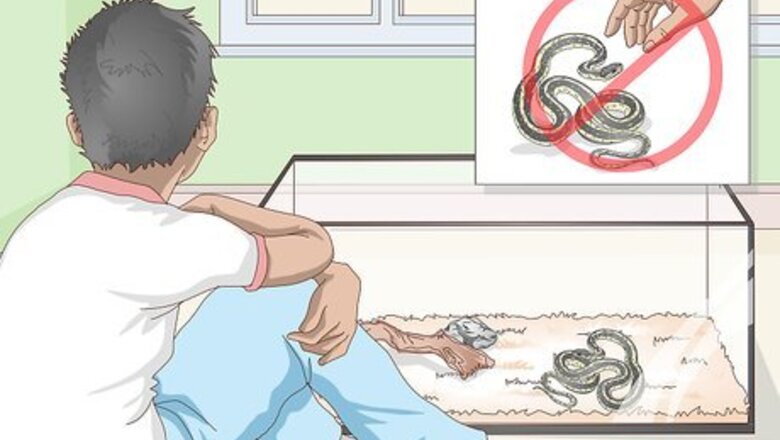
views
Introducing Yourself to Your Snake
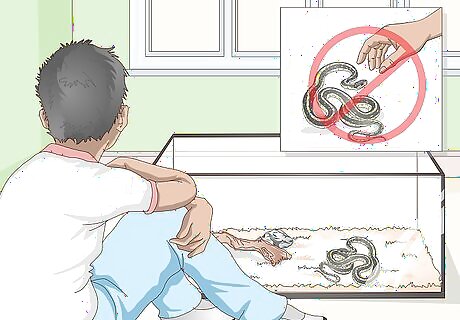
Give your snake time to adjust to you. Whether you are dealing with a hatchling or captive-bred snake that shows little aggression, or a snake that is exhibiting a great deal of aggressive behavior, the first thing you should do is allow your snake to adjust to you. For the first week or so that you have your snake, just sit outside its cage for about an hour each day and allow it to get used to your smell. Don’t attempt to touch your snake at all during this week.

Move items around in its cage without touching it. At the end of this initial week, you can begin to move things around inside your snake’s cage. However, it is still important that you do not attempt to touch the snake at this point. Do this for another week so that your snake can get used to the idea that you are not trying to harm it. Being around it without attempting to touch it will let your snake know you are not a threat.
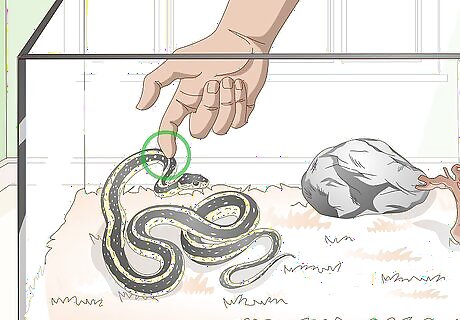
Touch your snake inside its cage. Once you have let your snake know you are not a threat, you can begin to touch it while it is inside its cage. To do so, place your hand in its cage and gently start working with it by touching it, moving it around inside the cage, and lifting its tail. Continue working with your snake in this manner for three or four days.
Combating Your Snake’s Aggressive Behavior
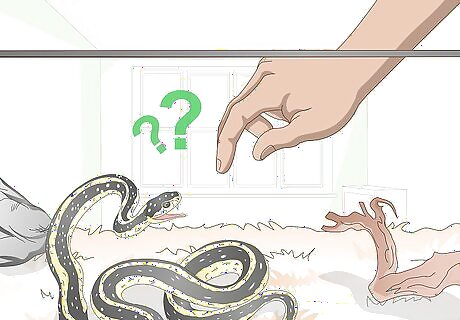
Determine why it is aggressive. Unless you’re taming a hatchling or captive-bred snake, you’ll likely have to deprogram your snake of its aggressive behavior. The first step to doing this is to determine what type of aggression your snake is showing. There are two types of aggressive responses you can deprogram in snakes—territorial, or defensive responses, and feeding responses. Territorial responses are instinctive and not an indicator of aggression. Snakes live most of their lives in fear of being eaten by bigger predators (which includes humans) so this response is a defense mechanism that can be tamed with consistent, gentle care. Feeding responses are another natural, instinctive response. Snakes are generally “taught” to bite whatever comes into their cage. Because they assume anything that enters their cage is food, you might get bitten if you stick your hand into their cage without first deprogramming this response.
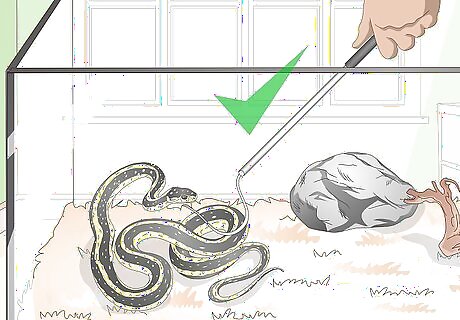
“Hook train” especially aggressive snakes. Some species of snakes are more aggressive than others and might require more training. If you’re dealing with a particularly aggressive species or snake, you’ll want to “hook train” it. To do so, gently rub its body or push down on its head with a hook, or a similar inanimate object, every time you go to get it out of its cage. Doing so will let your snake know it is not feeding time so there is no need to bite whatever enters the cage. If your snake appears scared when you open the cage, spend a little more time rubbing its body with the hook until it appears to calm down. For instance, if your snake coils into a ball, flattens out its body, or assumes a striking position, spend some time rubbing its body until it relaxes a bit. Start rubbing your snakes body from its tail end and work up to its head. Starting with its head could seem threatening, especially if your snake is already scared.
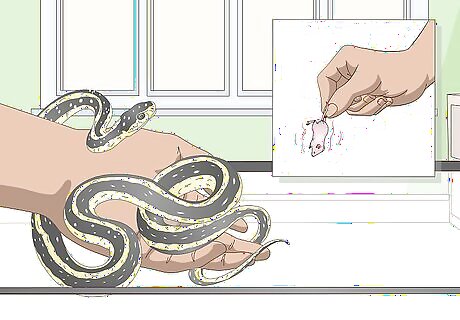
Hold your snake more often than you feed it. The most common reason people get bitten is because their snake is reacting to its feeding response every time something enters its cage. To deprogram it of this response, stop feeding your snake every week. Instead, feed it only once every three weeks, but make sure you handle your snake every day. This will deprogram the snake from thinking everything that enters its cage is food. It can also be helpful to feed your snake in a separate tub. This will also help it from thinking everything that enters its cage is food. However, don’t feed it only in the tub because this will just transfer its response from the cage to the tub. It is perfectly safe to only feed your snake once every three weeks. Snakes can go weeks without eating with no harm done.
Handling Your Snake Correctly
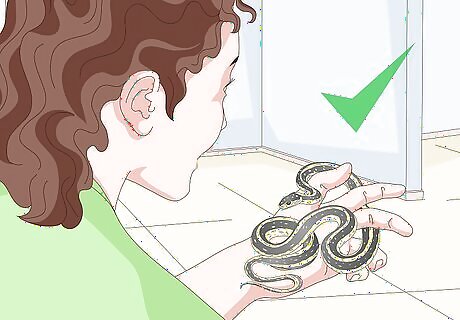
Be confident. Now that you’ve introduced yourself to your snake and have worked on deprogramming it of any aggressive behavior, you can begin to handle your snake outside its cage. It is important that you handle your snake with confidence. If you are hesitant or fearful, your snake will sense this and act in turn. It is a good idea to handle the species of snake you want to keep as a pet under the supervision of a professional or long-time owner before getting one for yourself. This will help ensure you are comfortable with your snake when you get it.

Wash your hands. You should wash your hands thoroughly before attempting to handle your snake. Reptiles have excellent sensory organs so if there is even a light scent of prey on your hand, your snake might mistake your hand for something it should eat. In addition, washing your hands before you handle your snake helps prevent the possibility of introducing foreign bacteria, parasites, or germs into your pet’s habitat.
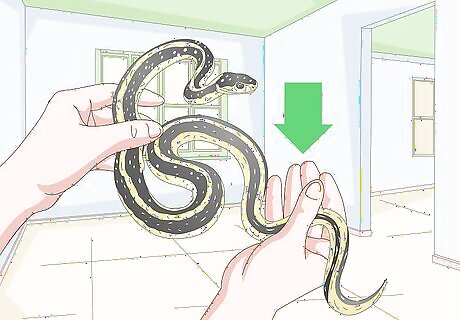
Provide support for its body. It is important to support your snake’s body when you are picking it up so that it is comfortable and there is no strain put on its body. This is true whether you are picking your snake up with a hook or with your hands. Keep the first third of your snake’s body supported with either the hook or one of your hands, while supporting the back two thirds of your snake’s body with your other arm. Remember your “hook training” before placing your hands in your snake’s cage. Lightly pressing down on your snake’s head with a hook will let it know it is not feeding time so there is no need to strike. Don’t ever grab a snake by the end of its tail to pick it up or move it. This can cause fear and serious strain to the snake’s body.
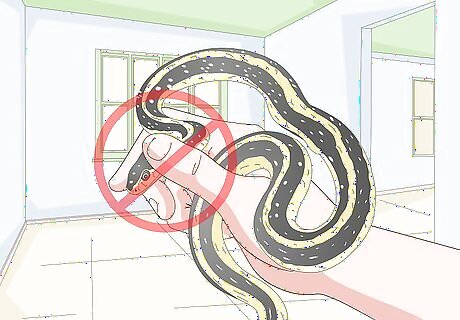
Don’t restrain its head. Restraining your snake’s head can cause it to believe you are a predator that is trying to hurt it. When you handle your snake, stick to holding it by its body and avoid holding or restraining its head.
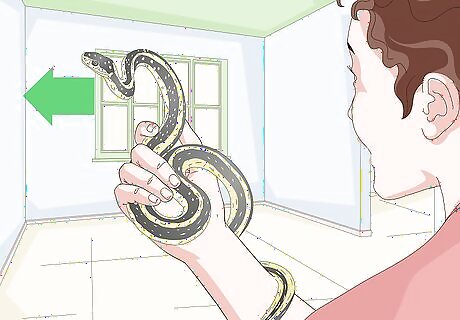
Point its head away from you. Until you are completely comfortable handling your snake, it is a good idea to hold it with its head facing away from you. This will give your snake a chance to become accustomed to you and the motion of your hands or body without the threat that the experience may turn negative.
Creating the Right Environment
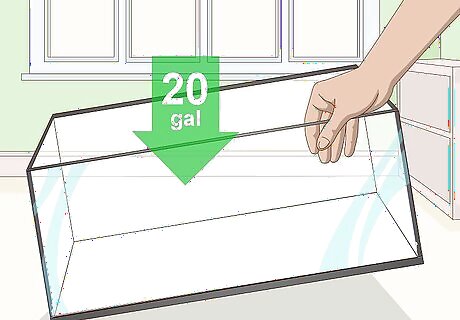
Get the right size cage. If your snake is still displaying aggressive behavior after you’ve introduced yourself and deprogrammed it, it could be that something in its environment is making it sick or upset. If a snake is upset because it is too hot or cold, or feels vulnerable or threatened in its environment, it is more likely to lash out. Therefore, creating and maintaining a proper environment for your snake is imperative to taming it. The first step to creating the right environment for your snake is to get it a proper cage. Most snakes fit into one of three groups when it comes to cage size: Garter snakes and grass snakes need a 10 to 20 gallon (37.9 to 75.7 L) aquarium. King snakes, rat snakes, milk snakes, gopher snakes and other colubrids need a 30 to 55 gallon tank. Boa constrictors and pythons may need a custom-built cage, as they can vary greatly in length and size.
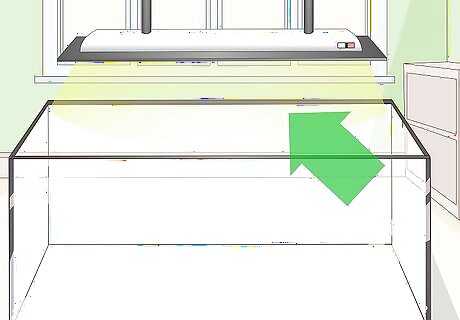
Provide proper lighting. Most diurnal snakes, or those that are active during the day, need a bright white light during the day and very dim lighting at night. If the room you are keeping your snake in has only dim lighting during the day, you’ll need to place an incandescent white light above your snake’s cage to give them enough light. At night, they need very little light. Nocturnal reptile lights or decorative incandescent lights in dark colors (like red, blue, and green) will provide the right amount of light during the night. The amount of light a snake needs varies by species so find out exactly what your species of snake requires. For example, unlike diurnal snakes, ball pythons are nocturnal and don’t require a supplementary source of lighting. Continuous overhead lighting is especially stressful to a nocturnal species. Lighting and heating your snake’s cage go hand in hand so you’ll want to pay attention to how one affects the other.
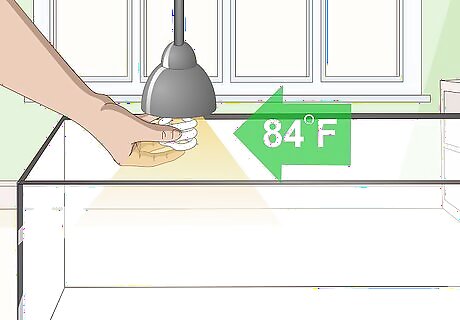
Provide a primary heat source. Snakes require the optimal temperature to live comfortably. This requires both a primary heat source and a secondary one. The purpose of the primary heat source is to keep the temperature of the entire cage in the correct range. This is best achieved by adding a series of incandescent lights along the top of the cage. The ideal temperature for a snake enclosure varies by species. In general, however, most snakes prefer a temperature between 80 and 88 degrees Fahrenheit (26 to 31 degrees Celcius). At night, however, it is best for snakes to be held at a temperature 5 to 20 degrees cooler than their daytime temperature. To create the right night time temperature, you can use such things as a heating pad placed under your snake’s cage, ceramic infrared heat emitters, or nocturnal reptile incandescent light bulbs, all of which provide heat without much light. Get several thermometers to place in the cage to ensure you are keeping it at optimal temperatures.
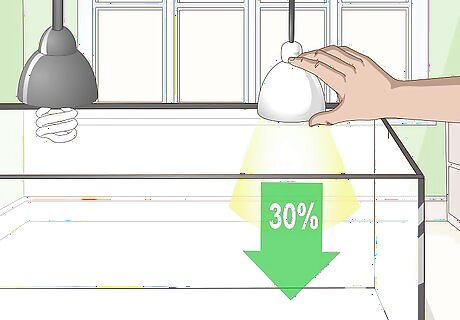
Install a secondary heat source. Reptiles need to be provided a temperature gradient in their cages so that they can go to whichever temperature is most comfortable for them at the moment. To do this, you must install a secondary heat source in your snake’s cage. This secondary source should only cover approximately 25 to 30 percent of the snake’s cage. To create this secondary heat source, you can either mount a 50 to 75 watt incandescent light bulb on the outside of one wall of the cage, or place an under-the-tank heater underneath only one-quarter of the tank. Specially made ”basking lights” are a great way to create a heat gradient as well. These lights are placed outside the cage and create heat in one specific area of the tank. Again, the needs of different species vary, so find out the appropriate head gradient for your species of snake. For example, ball pythons prefer an ambient temperature of 78 to 80 °F (25.6 to 26.7 °C) and a basking spot temperature of 88 to 96 degrees Fahrenheit (31 to 35 degrees Celcius).
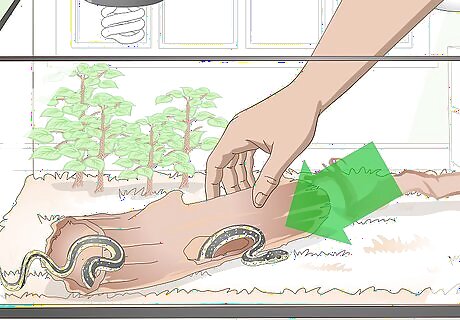
Provide places for your snake to hide. Snakes are hiders by nature and do so if they feel threatened. If you do not provide places for your snake to hide, it will likely feel vulnerable and threatened, thus becoming aggressive. A cave made of rock or a clean piece of cardboard your snake can get under both make great hiding places for a snake. You can also use clay or plastic flowerpots as hiding spots for your snake.
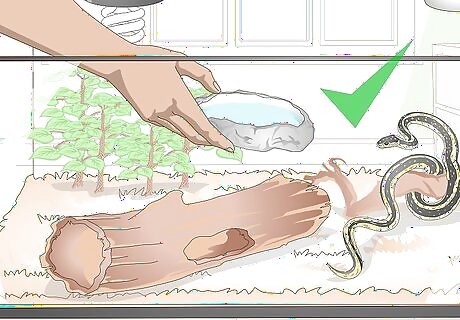
Provide water. Just like other animals, snakes need water. Ensure your snake has fresh, clean water at all times. You can use a water bowl in its cage, just make sure it is not easy to tip over.




















Comments
0 comment